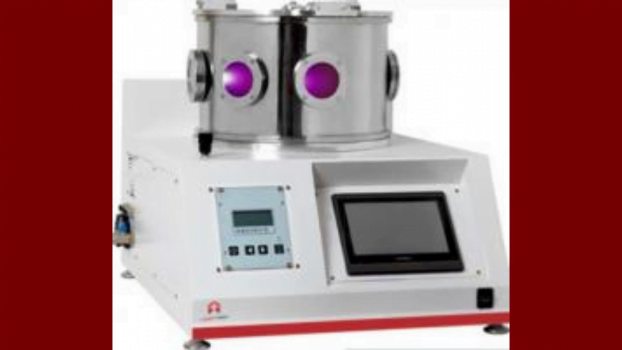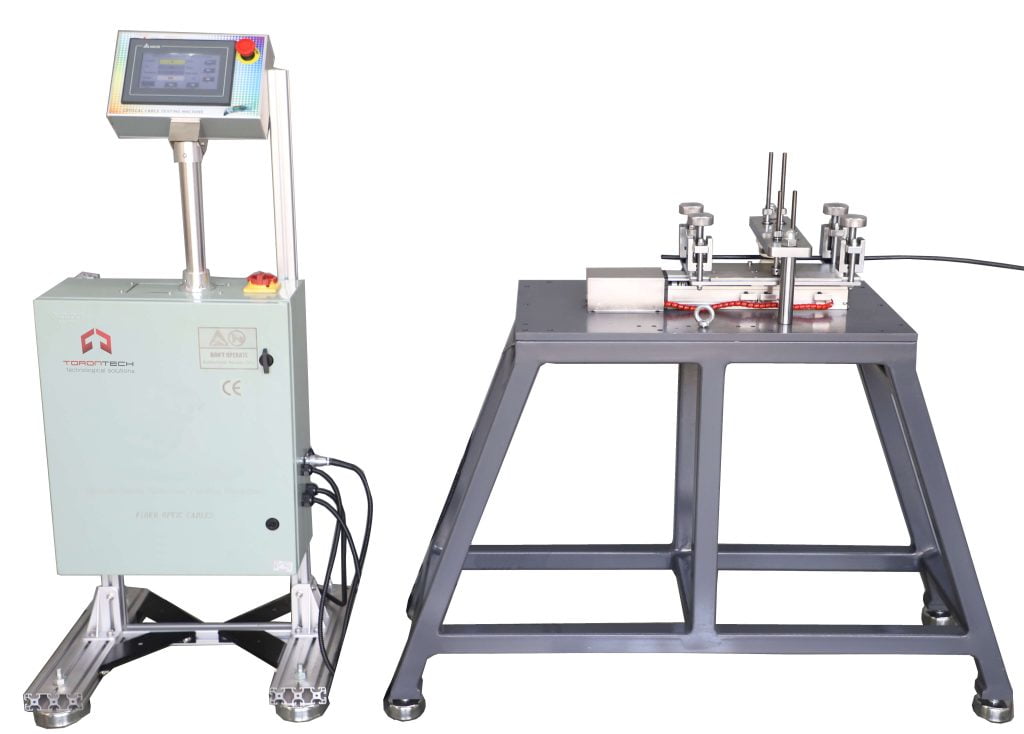Sample preparation is a critical aspect across various industries, guaranteeing precise and dependable outcomes in research, quality control, and manufacturing operations. In the pursuit of efficient sample preparation, Disc Mills stands out as an essential instrument. These versatile machines are engineered to manage diverse materials, providing accurate grinding and crushing functionalities.
Disc Mills, commonly known as grinding mills or disc mill crusher, are specifically designed to crush, grind, or pulverize solid materials. These powerful machines employ rotating steel discs to exert intense grinding forces on the material, resulting in finely ground particles. With their ability to handle a wide range of materials and applications, Disc Mills have become indispensable in laboratories, research facilities, and various industrial sectors.
By employing the latest technological advancements, Disc Mills offers unparalleled performance and versatility. The adjustable gap between the discs allows for precise control over the particle size, enabling tailored sample preparation to meet specific requirements. Whether it’s breaking down grains, processing spices, or grinding oxide ceramics, ores, and glass materials, Disc Mills delivers consistent results with exceptional efficiency.
Understanding Disc Mills: Definition, Function, and Working Principle
Before we dive into the intricacies of Disc Mills, let’s begin by exploring the fundamental question: What is a disc mill? what is the function? and how it does work? Let’s delve further into the functions and workings of this versatile tool.
What is a Disc Mill?
A disc mill is a robust and versatile grinding tool designed for the comminution (size reduction) of solid materials. It consists of two or more steel discs or plates mounted on a central shaft.
These discs are precision-engineered with grooves, ridges, or serrations on their surfaces, enabling efficient grinding or pulverizing of various substances. Disc mills find wide applications in industries such as agriculture, food processing, mining, and research laboratories.
The Function of a Disc Mill
The primary function of a disc mill is to crush, grind, or pulverize solid materials into smaller particles. It achieves this through the application of intense grinding or shearing forces between rotating steel discs.
The disc milling machine’s ability to handle diverse materials, such as grains, spices, plastics, ores, and minerals, makes it a valuable tool in sample preparation, quality control, and industrial processes. By adjusting the gap between the discs, operators can control the particle size distribution, catering to specific grinding requirements.
How Does a Disc Mill Work?
A disc mill machine operates on a simple yet effective principle of compression and shearing forces. Here is a step-by-step explanation of how a disc mill works:
1. Material Feed
The material to be processed is introduced into the center of the discs through a feed mechanism. Depending on the disc mill’s design, this can be achieved through gravity feeding or a controlled feeding system.
2. Grinding Zone
As the motor drives the central shaft, the steel discs rotate at high speeds in opposite directions. The material fed into the center of the discs is caught between them, entering the grinding zone. The centrifugal force generated by the rotating discs propels the material towards the outer edges.
3. Grinding Action
As the material moves towards the outer edges, it encounters the grinding surfaces of the discs. The grooves, ridges, or serrations on the disc surfaces effectively break down the material into smaller particles. The grinding or shearing forces exerted between the rotating discs reduce the material to the desired particle size.
4. Particle Discharge
Once the material is sufficiently ground, it reaches the outer edges of the discs and exits the grinding zone. The ground particles are then discharged through openings or screens located at the perimeter of the discs. By adjusting the size of these openings or screens, operators can control the final particle size of the ground material.
5. Gap Adjustment
The gap between the discs plays a critical role in determining the final particle size. Operators can adjust the gap to control the degree of grinding or shearing applied to the material. A smaller gap produces finer particles, while a larger gap results in coarser particles.
By harnessing the principles of compression and shearing forces, Disc Mills efficiently break down solid materials into the desired particle size range. Their versatility, precise particle size control, and robust construction make them indispensable tools in various industries, ensuring efficient sample preparation and reliable results.
Importance of Disc Mills in Efficient Sample Preparation
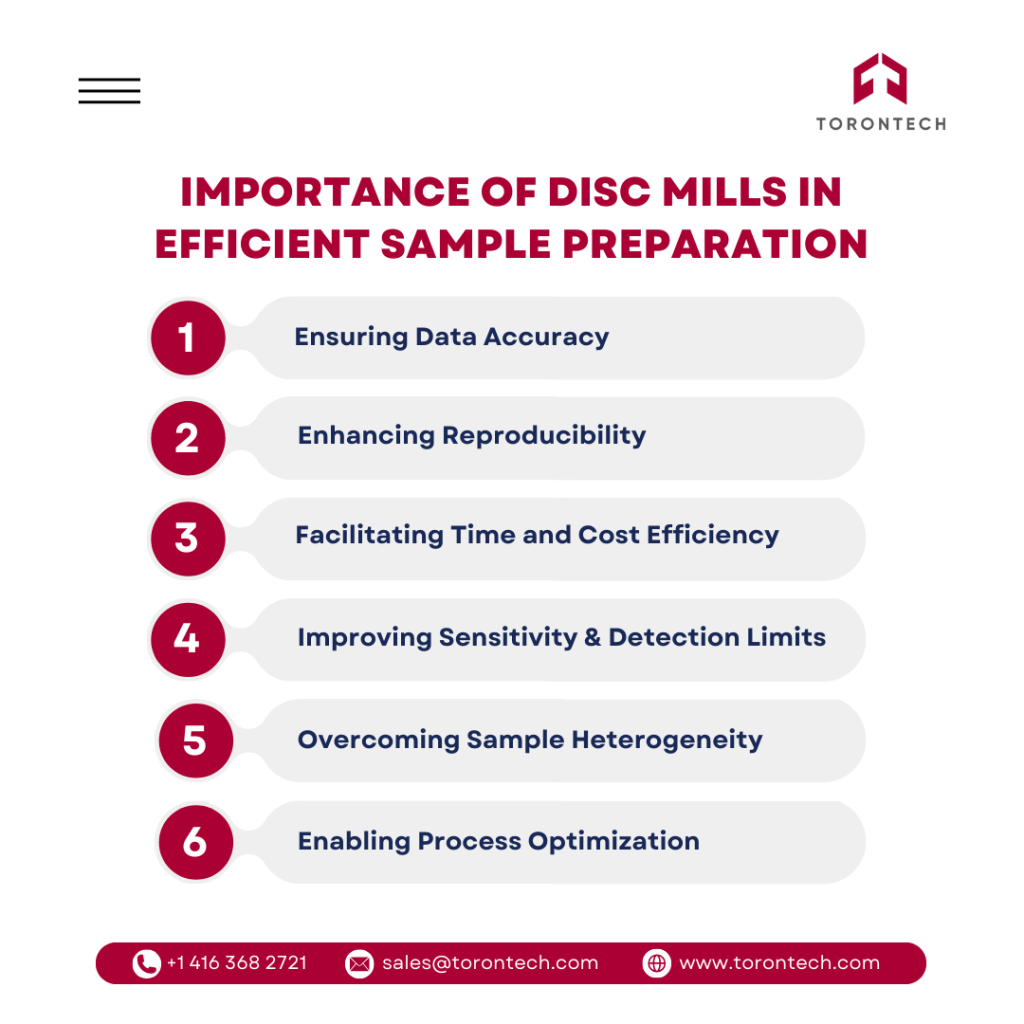
Accurate and reliable results are the cornerstone of any successful scientific endeavor or industrial process. In the realm of sample preparation, efficient techniques play a pivotal role in obtaining high-quality data that forms the basis for critical decisions.
Let’s delve into the importance of efficient sample preparation and shed light on the far-reaching implications it has across various industries.
1. Ensuring Data Accuracy
Efficient sample preparation is essential for obtaining accurate and representative data. Inaccurate or inconsistent sample preparation can introduce errors or biases that compromise the integrity of the results.
By employing reliable techniques such as Disc Mills, researchers and industry professionals can minimize the impact of variables and ensure the data obtained is a true reflection of the sample under investigation.
2. Enhancing Reproducibility
Reproducibility is a fundamental aspect of scientific research and industrial processes. Efficient sample preparation methods, such as those facilitated by Disc Mills, offer standardized approaches that enhance the reproducibility of results.
Consistency in particle size, homogeneity, and overall sample quality ensures that experiments can be replicated, and processes can be scaled up with confidence.
3. Facilitating Time and Cost Efficiency
Efficient sample preparation techniques save valuable time and resources. Disc mills, with their high grinding efficiency and throughput capabilities, expedite the sample preparation process without compromising quality.
By reducing processing time, organizations can optimize productivity, expedite research and development cycles, and streamline production processes, ultimately leading to cost savings.
4. Improving Sensitivity and Detection Limits
Effective sample preparation techniques can significantly improve the sensitivity and detection limits of analytical methods. By achieving a homogeneous and finely ground sample using Disc Mills, the available surface area for interaction with analytical instruments is maximized.
This increased surface area enhances the detection of trace components, leading to improved sensitivity and lower detection limits.
5. Overcoming Sample Heterogeneity
Samples in various industries are often heterogeneous, containing different particle sizes, densities, or compositions. Efficient sample preparation techniques, such as those employed by Disc Mills, help overcome this heterogeneity by reducing particle size and achieving uniformity.
Homogenizing the sample through grinding ensures that representative subsamples can be obtained for accurate analysis.
6. Enabling Process Optimization
Efficient sample preparation techniques have a direct impact on process optimization. By obtaining well-prepared samples, industries can make informed decisions regarding quality control, formulation adjustments, and process parameters.
The data derived from properly prepared samples enables organizations to optimize their processes, enhance product quality, and ensure regulatory compliance.
In this chapter, we have explored the importance of efficient sample preparation in achieving accurate data, enhancing reproducibility, and facilitating time and cost efficiency. We have also highlighted how efficient sample preparation improves sensitivity, overcomes sample heterogeneity, and enables process optimization.
Applications of Disc Mills in Various Industries
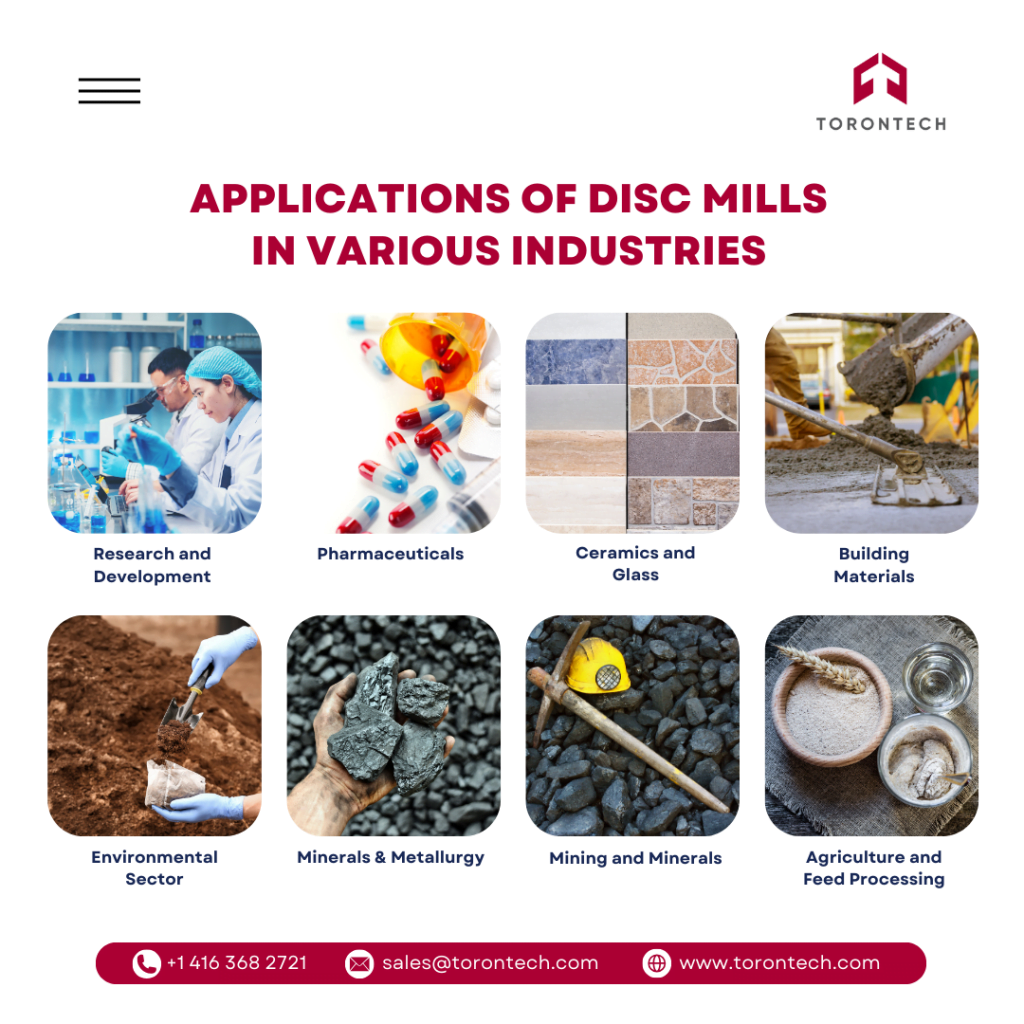
Are you wondering, what are the applications of Disc Mill? This laboratory milling/grinding equipment has proven to be an indispensable tool across a wide range of industries due to its versatility, efficiency, and ability to achieve precise particle size control. We will explore the diverse applications of Disc Mills and their significant contributions to scientific research, quality control, and industrial processes.
1. Research and Development
Disc mills are indispensable tools in research laboratories across various scientific disciplines. They facilitate sample preparation for analytical techniques such as spectroscopy, chromatography, and microscopy.
Disc mills enable researchers to obtain finely ground, homogenized samples, ensuring accurate and representative analysis. Their versatility allows for the processing of diverse sample types, including polymers, ceramics, soils, and biological materials, contributing to advancements in materials science, environmental research, and life sciences.
2. Pharmaceuticals
In the pharmaceutical industry, Disc Mills plays a vital role in the preparation of drug formulations and the production of fine powders. They are utilized for size reduction of active pharmaceutical ingredients (APIs), excipients, and other raw materials, enabling efficient blending, granulation, and tableting processes.
Disc mills ensure uniform particle size distribution, enhancing drug dissolution rates, bioavailability, and overall product quality. They are also utilized for micronization, enabling the production of fine powders with controlled particle sizes for inhalation or oral delivery systems.
3. Ceramics and Glass
Disc mills are utilized in the ceramics and glass industry for grinding oxide ceramics and glass materials. They aid in reducing these materials to fine powders or achieving the desired particle size distribution for further processing, such as forming, shaping, and sintering.
4. Building Materials
In the building materials industry, Disc Mills play a role in grinding and pulverizing various materials such as cement, stone, and concrete. They assist in reducing these materials to the desired particle size for cement production, aggregate preparation, and construction applications.
5. Environmental Sector
Disc mills find application in the environmental sector for grinding and processing materials such as soil, paving stone, and slag. They assist in preparing samples for environmental analysis, soil remediation, and recycling processes.
Disc mills aid in reducing the size of these materials, facilitating their characterization, and promoting sustainable practices in the environmental sector.
6. Minerals & Metallurgy
Disc mills are widely used in the minerals and metallurgy industry for grinding various materials, including coal, coke, corundum, ore, and slag.
They are utilized in mineral processing plants, where they aid in the liberation of valuable minerals from ores and the production of finely ground mineral concentrates. Disc mills also contribute to the preparation of metallurgical samples and the production of powdered materials used in metallurgical processes.
7. Mining and Minerals
Disc mills find extensive use in the mining and minerals industry for the preparation of samples for mineral analysis and characterization. They are employed to crush and grind ores, rocks, and minerals to a desired particle size, facilitating subsequent analysis, mineral separation, and metallurgical processes.
Disc mills provide reliable and reproducible results, enabling mining professionals to accurately assess ore quality, optimize extraction processes, and ensure efficient mineral processing operations.
8. Agriculture and Feed Processing
Disc mills play a crucial role in the agricultural sector for grinding grains, cereals, and other feed ingredients. They ensure the production of uniformly ground feed, which improves digestibility and nutrient absorption in livestock, leading to enhanced animal health and productivity
Additionally, Disc Mills are utilized for milling seeds, such as corn, soybeans, and wheat, to obtain finely ground meal or flour for further processing or feedstock production.
These applications further highlight the versatility of Disc Mills across various industries, where they contribute to process efficiency, product quality, and innovation. The adaptability of Disc Mills to different materials and requirements makes them valuable tools in numerous sectors, shaping the manufacturing and development of diverse products.
Advantages, Disadvantages, and Considerations of Disc Mills
In this chapter, we will explore the advantages, disadvantages, and considerations associated with Disc Mills. Understanding the benefits, limitations, and key factors to consider when using Disc Mills can help industries and researchers make informed decisions and maximize the efficiency and effectiveness of their grinding processes.
What Advantages of Disc Mills?
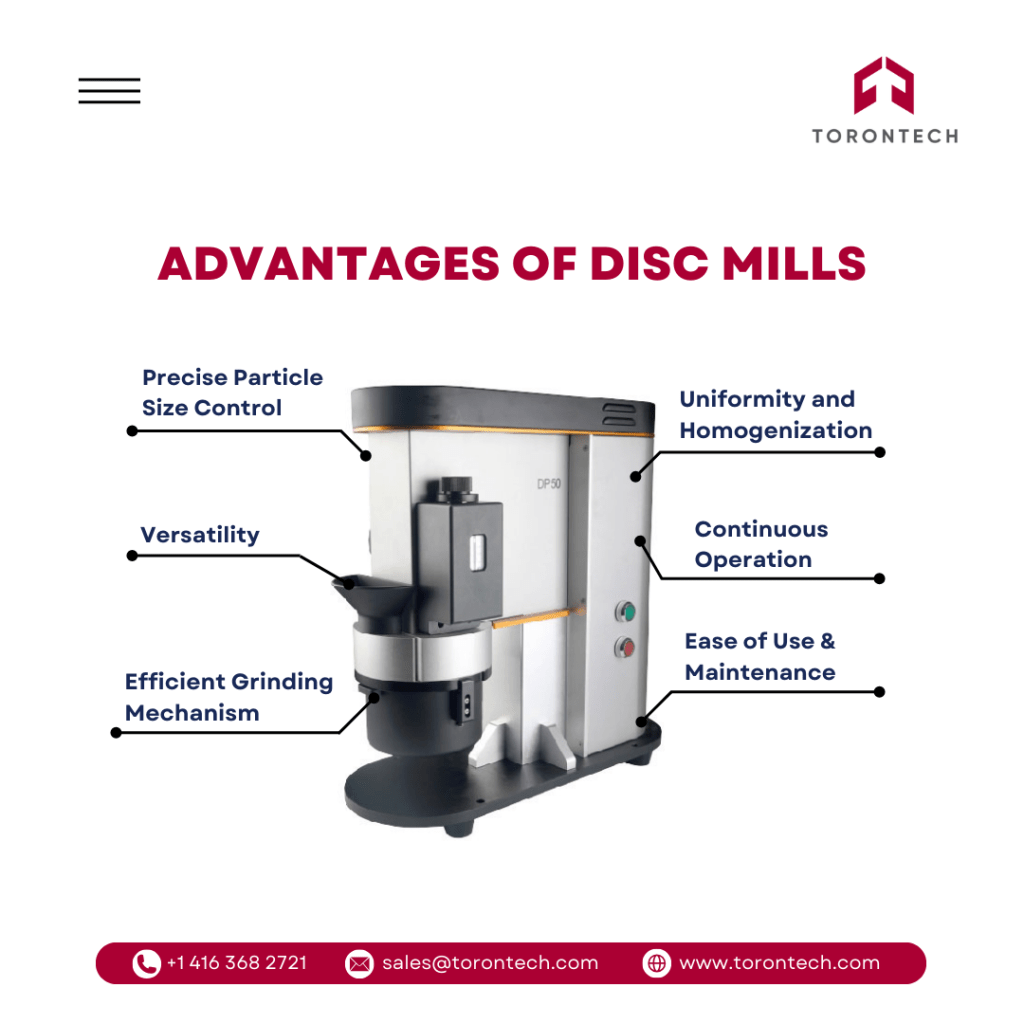
Disc mills offer several advantages that make them valuable grinding tools in various industries. Here are some of the key advantages of Disc Mills.
1. Versatility
Disc mills are highly versatile grinding tools capable of handling a wide range of materials, including grains, spices, plastics, ores, minerals, ceramics, and more. Their adaptability makes them suitable for diverse industries and applications, providing a single solution for various grinding needs.
2. Precise Particle Size Control
Disc mills offer excellent control over the particle size distribution of the ground material. By adjusting the gap between the discs, operators can achieve specific particle sizes, ensuring consistency and meeting desired specifications for different purposes, such as product formulation or analytical requirements.
3. Efficient Grinding Mechanism
The design of Disc Mills, with grooved, ridged, or serrated surfaces on the discs, promotes efficient grinding or pulverizing of materials. The high-speed rotation of the discs generates intense grinding forces, effectively reducing the size of the particles and achieving rapid and efficient comminution.
4. Uniformity and Homogenization
Disc mills provide uniform particle size reduction, resulting in consistent and homogeneous ground materials. This is particularly important in industries where product consistency and quality are crucial, such as food processing or pharmaceutical manufacturing. Disc mills also aid in sample homogenization, ensuring representative samples for analysis or research purposes.
5. Continuous Operation
Disc mills are designed for continuous operation, allowing for a steady feed of material and consistent output of ground particles. This feature is particularly beneficial in high-throughput applications, where a continuous supply of finely ground material is required for subsequent processes or production.
6. Ease of Use and Maintenance
Disc mills are generally easy to operate and maintain. They typically have straightforward controls for adjusting the grinding gap and feeding the material. Maintenance tasks, such as disc replacement or cleaning, can be performed relatively easily, ensuring minimal downtime and efficient operation.
What Disadvantages of Disc Mills?
While disc mill machines offer numerous advantages, they also have certain limitations and disadvantages that should be considered. Here are some of the disadvantages of Disc Mills.
1. Limited Application for Hard Materials
Disc mills may face challenges when grinding extremely hard materials, such as certain types of ceramics, abrasives, or hardened metals. The hardness of these materials can cause excessive wear on the grinding surfaces or lead to reduced grinding efficiency.
2. Heat Generation
The high-speed rotation and intense grinding action of Disc Mills can generate heat during the grinding process. In some cases, excessive heat can affect the integrity of heat-sensitive materials or lead to thermal degradation, altering the properties of the ground product. Cooling measures or modifications may be necessary to mitigate heat-related issues.
3. Noise and Vibration
The operation of Disc Mills can generate noise and vibration, especially at higher rotational speeds. This can be a concern in certain working environments or applications where noise levels need to be minimized or controlled. Proper noise reduction measures and vibration-damping techniques may be required.
4. Limited Coarse Grinding Capability
Disc mills are generally more suitable for fine to medium grinding applications. If coarse grinding or large particle size reduction is required, other types of milling equipment, such as cutting mills or jaw crushers, may be more appropriate.
5. Maintenance and Disc Replacement
Disc mills require regular maintenance and occasional disc replacement to ensure optimal performance. The grinding surfaces can wear over time, affecting grinding efficiency and particle size control. Disc replacement involves additional costs and downtime for the equipment.
6. Size Limitations
Depending on the specific disc mill model and design, there may be limitations on the maximum feed size or sample volume that can be processed. It is important to consider these size limitations when selecting a disc mill for a particular application.
Despite these disadvantages, Disc Mills remain valuable tools in various industries due to their versatility, efficient grinding capabilities, and precise particle size control.
Considerations for Disc Mill Usage
While Disc Mills have benefits and limitations, there are certain considerations that users should keep in mind to optimize their usage. Now, let’s delve into the key considerations associated with disc mill usage.
1. Material Compatibility
While Disc Mills can handle a wide range of materials, it is essential to consider the compatibility of the material with the grinding surfaces. Some abrasive or corrosive materials may require specialized disc materials or coatings to ensure durability and prevent contamination.
2. Power and Speed
The power and rotational speed of the disc mill should be chosen based on the material characteristics and desired particle size reduction. It is crucial to select the appropriate power and speed settings to achieve efficient grinding while avoiding excessive heat generation or equipment damage.
3. Particle Size Distribution Analysis
It is important to perform particle size analysis to verify and validate the grinding process of Disc Mills. Regular monitoring of the particle size distribution helps maintain consistency, optimize grinding parameters, and ensure the desired product quality.
4. Disc Design and Maintenance
The selection of appropriate disc designs, including groove patterns, ridges, or serrations, depends on the specific material and desired grinding outcome. Additionally, regular maintenance and inspection of discs are necessary to ensure optimal performance and extend the lifespan of the equipment.
5. Safety Considerations
Like any industrial equipment, Disc Mills require adherence to safety protocols. Operators should be trained in proper usage, including feeding techniques, disc adjustments, and maintenance procedures. Safety features such as interlocks, guards, and emergency stop mechanisms should be in place to ensure operator protection.
Understanding the advantages, disadvantages, and considerations associated with Disc Mills empowers industries and researchers to make informed decisions regarding grinding processes. By leveraging the versatility, precise particle size control, and efficiency of Disc Mills while considering material compatibility, maintenance, safety, and particle analysis, users can harness the full potential of Disc Mills in their respective applications.
Choosing the Suitable Disc Mill for Your Sample Preparation at Torontech

Selecting the right disc mill for your laboratory or industrial applications is crucial for achieving precise grinding results and optimizing efficiency. Torontech offers a range of Disc Mills designed to meet various grinding requirements and accommodate different sample types.
Let’s explore three Disc Mills offered by Torontech and discuss their features, applications, and technical specifications to assist you in choosing the most suitable option for your sample preparation needs.
1. Soil Mill DP50
The Soil Mill DP50 is a precision grinding tool specifically designed for large-scale environmental soil tests. Its unique horizontal disc arrangement sets it apart from other vertical Disc Mills in the market.
This configuration allows for rapid size reduction to under 75 microns for moderately hard and brittle samples. The DP50 excels in ease of use, efficient milling, and minimal residue in the mill chamber.
It finds application in various materials such as soil, building materials, nuclear ore, cement, concrete, cinder, coke, glass, porcelain, minerals, refractory clay, granite, and monohydrallite.
2. Disc Mill DP100
The Disc Mill DP100 is a robust and durable device suitable for both preliminary and fine grinding of medium-hard, hard, and brittle solid materials. With its ability to rapidly reduce samples to particles as small as 100μm, the DP100 is an excellent option for a wide range of materials including concrete, building debris, granite, basalt, silicate, gypsum, dry soil samples, depositional sludge, quartz, coal, coke, lime mud, refractory clay, glass, and ceramics for dentistry, among others.
3. Vibratory Disc Mill VM3
The Vibratory Disc Mill VM3 is specifically designed for preparing samples for spectral analysis. It is ideal for grinding medium-hard, brittle, and fibrous materials to achieve analytical fineness without any loss.
The VM3 utilizes intense three-dimensional vibrations generated by a vibrating plate, resulting in significant impact, friction, and grinding forces on the samples. This mill is suitable for ceramics, glass, building materials, environmental sectors (soil, paving stone, slag), and minerals and metallurgy applications (coal, coke, corundum, ore, slag).
Technical Specification Comparison
To simplify the selection process, we have provided a comparison of technical specifications for each type in the table below.
|
Parameter |
Soil Mill DP50 | Disc Mill DP100 | Vibratory Disc Mill VM3 |
|
Feed Size |
<2mm | <20mm | <15mm |
| Final Fineness | <75 µm (95%) | <75μm |
<75μm |
|
Speed |
800 rpm | 470rpm | 700~1500rpm |
| Collecting Pan Volume | 2L | 2.5L |
N/A |
|
Grinding Gap Width Adjust Range |
0-25mm | Continuous adjustment |
N/A |
|
Grinding Sets Material |
Hardened steel, agate, zirconium oxide, sintered aluminum, tungsten carbide | Multiple options available | Hardened steel, tungsten carbide, agate (speed 700rpm), zirconium oxide |
| Rated Power | 550W | 1.5KW |
1.5KW |
| Power Supply | 220V, 50/60Hz (110V also available upon request) | 380V, 50Hz (110V also available upon request) |
220V, 50Hz/60Hz (110V also available upon request) |
By evaluating the features, applications, and technical specifications of the Soil Mill DP50, Disc Mill DP100, and Vibratory Disc Mill VM3, you can make an informed decision and choose the most appropriate disc mill to meet your specific sample preparation requirements. Torontech’s range of Disc Mills ensures reliable and efficient grinding, contributing to accurate analysis and research outcomes.
Conclusion
Disc mills are essential tools in sample preparation, offering efficient and accurate grinding for various materials. Torontech’s range of Disc Mills, including the Soil Mill DP50, Disc Mill DP100, and Vibratory Disc Mill VM3, provide reliable performance and versatility.
Our Disc Mills excels in grinding soil, building materials, ores, minerals, ceramics, and more, ensuring precise particle size reduction for analysis. Torontech’s models offer unique features such as horizontal disc arrangement, robust design, and spectral analysis preparation capabilities.
Investing in the right disc mill enhances sample preparation efficiency and yields reliable results. Torontech’s Disc Mills delivers superior performance, ease of use, and durability, contributing to accurate analysis and research outcomes.
Choose Torontech’s Disc Mills to optimize your sample preparation processes, enabling successful research, analysis, and quality assurance in your laboratory.



